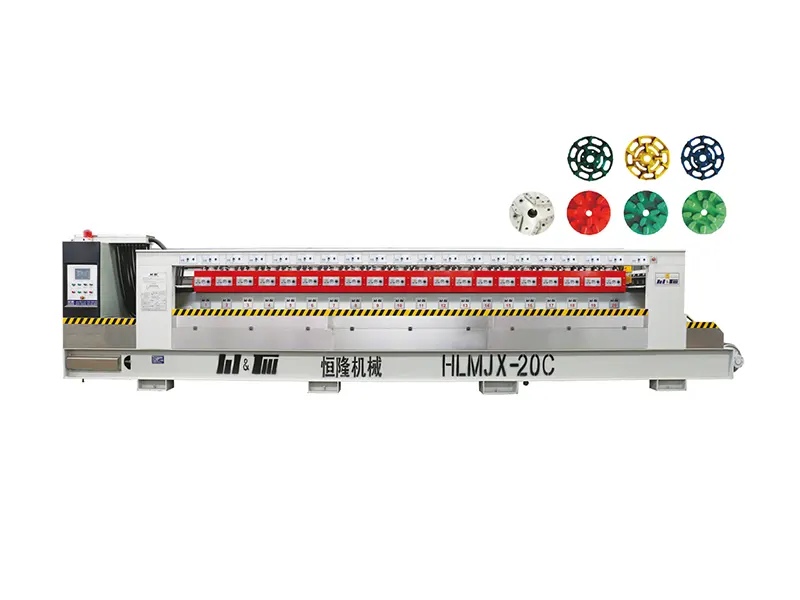Unlocking the Secrets of Stone Polishing Machines: A Comprehensive Guide
Time:
Jul 12,2025
Stone polishing machines play a crucial role in the stone processing industry, particularly in the construction and decorative materials sector. These machines are designed to enhance the natural beauty of stone surfaces, making them an essential tool for fabricators and installers alike. Whether dealing with granite, marble, or other types of stone, polishing machines ensure that surfaces are smooth, shiny, and aesthetically pleasing.
The primary function of a stone polishing machine is to refine the surface of the stone after it has been cut or shaped. The process involves using various abrasives to gradually smooth out imperfections and create a polished finish. Most machines come equipped with rotating pads or discs that can be fitted with different types of abrasives, allowing operators to adjust the level of polish to meet specific requirements.
There are several types of stone polishing machines available, ranging from handheld units ideal for small jobs to larger, industrial-grade machines suitable for extensive slabs and tiles. Portable polishing machines are particularly useful for onsite work, allowing for quick touch-ups and final finishes without the need for extensive equipment setup.
One of the key advantages of using a stone polishing machine is the efficiency it brings to the polishing process. Manual polishing can be labor-intensive and time-consuming, often leading to uneven finishes. In contrast, machines can produce consistent results in a shorter period, which can significantly boost productivity and reduce labor costs. Additionally, the precision offered by machines minimizes the risk of damaging the stone during the polishing process.
Proper maintenance of stone polishing machines is essential to ensure their longevity and optimal performance. Regular cleaning of the pads, proper storage, and timely replacement of worn-out parts contribute to the overall efficiency and effectiveness of the machines. Operators should also familiarize themselves with the specific settings and requirements for different types of stone, as each material may require a tailored approach to achieve the best results.
In summary, stone polishing machines are indispensable tools in the architectural and decorative material industries. Their ability to produce high-quality finishes efficiently makes them a preferred choice among professionals. Understanding the workings of these machines and adhering to maintenance best practices can lead to better results and enhanced customer satisfaction in stone processing projects. Whether you are a contractor, fabricator, or DIY enthusiast, investing time in mastering the use of stone polishing machines can significantly elevate the quality of your work and the appeal of the finished product.
The primary function of a stone polishing machine is to refine the surface of the stone after it has been cut or shaped. The process involves using various abrasives to gradually smooth out imperfections and create a polished finish. Most machines come equipped with rotating pads or discs that can be fitted with different types of abrasives, allowing operators to adjust the level of polish to meet specific requirements.
There are several types of stone polishing machines available, ranging from handheld units ideal for small jobs to larger, industrial-grade machines suitable for extensive slabs and tiles. Portable polishing machines are particularly useful for onsite work, allowing for quick touch-ups and final finishes without the need for extensive equipment setup.
One of the key advantages of using a stone polishing machine is the efficiency it brings to the polishing process. Manual polishing can be labor-intensive and time-consuming, often leading to uneven finishes. In contrast, machines can produce consistent results in a shorter period, which can significantly boost productivity and reduce labor costs. Additionally, the precision offered by machines minimizes the risk of damaging the stone during the polishing process.
Proper maintenance of stone polishing machines is essential to ensure their longevity and optimal performance. Regular cleaning of the pads, proper storage, and timely replacement of worn-out parts contribute to the overall efficiency and effectiveness of the machines. Operators should also familiarize themselves with the specific settings and requirements for different types of stone, as each material may require a tailored approach to achieve the best results.
In summary, stone polishing machines are indispensable tools in the architectural and decorative material industries. Their ability to produce high-quality finishes efficiently makes them a preferred choice among professionals. Understanding the workings of these machines and adhering to maintenance best practices can lead to better results and enhanced customer satisfaction in stone processing projects. Whether you are a contractor, fabricator, or DIY enthusiast, investing time in mastering the use of stone polishing machines can significantly elevate the quality of your work and the appeal of the finished product.







